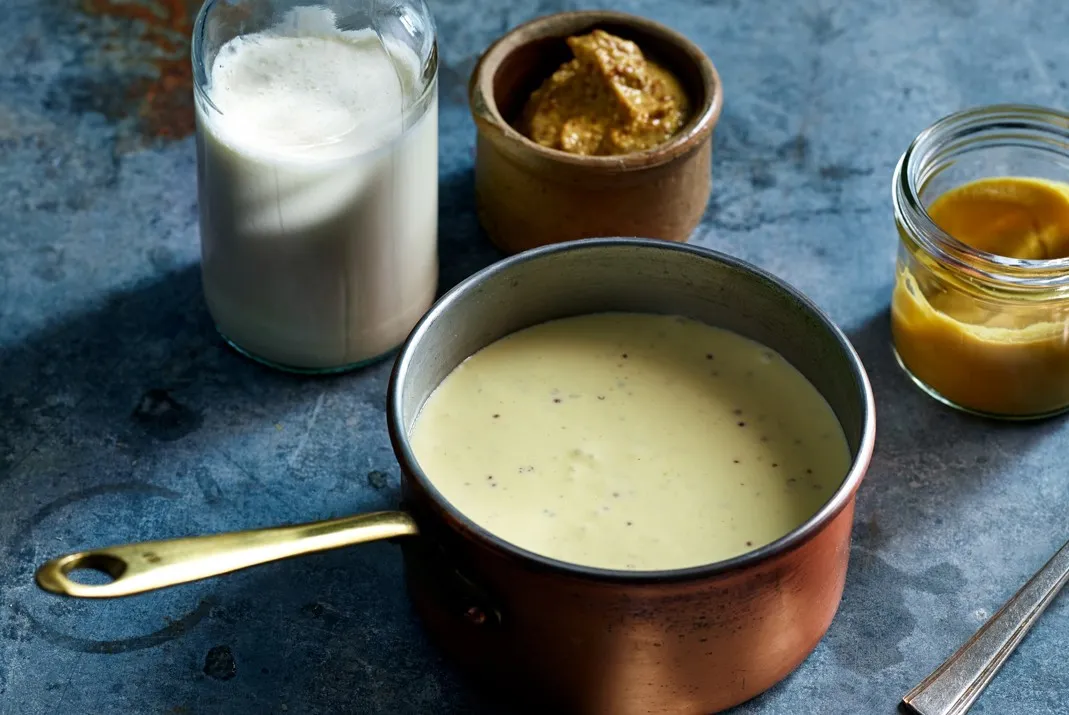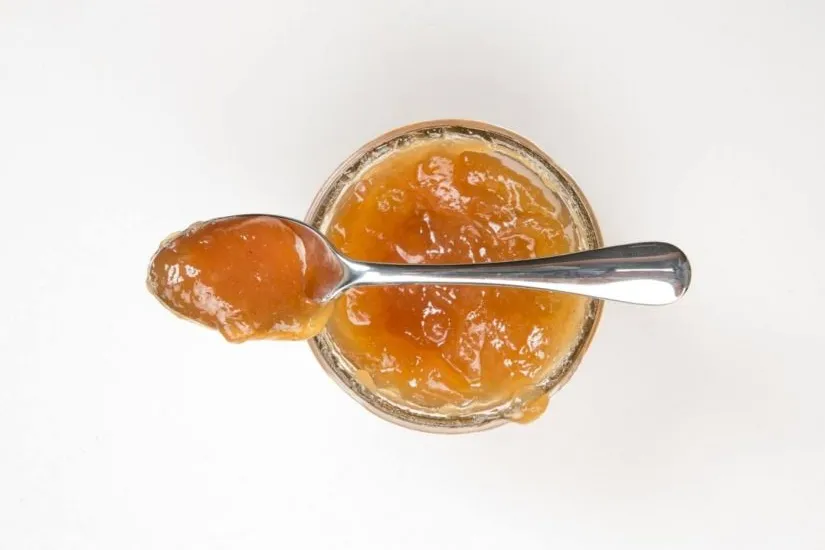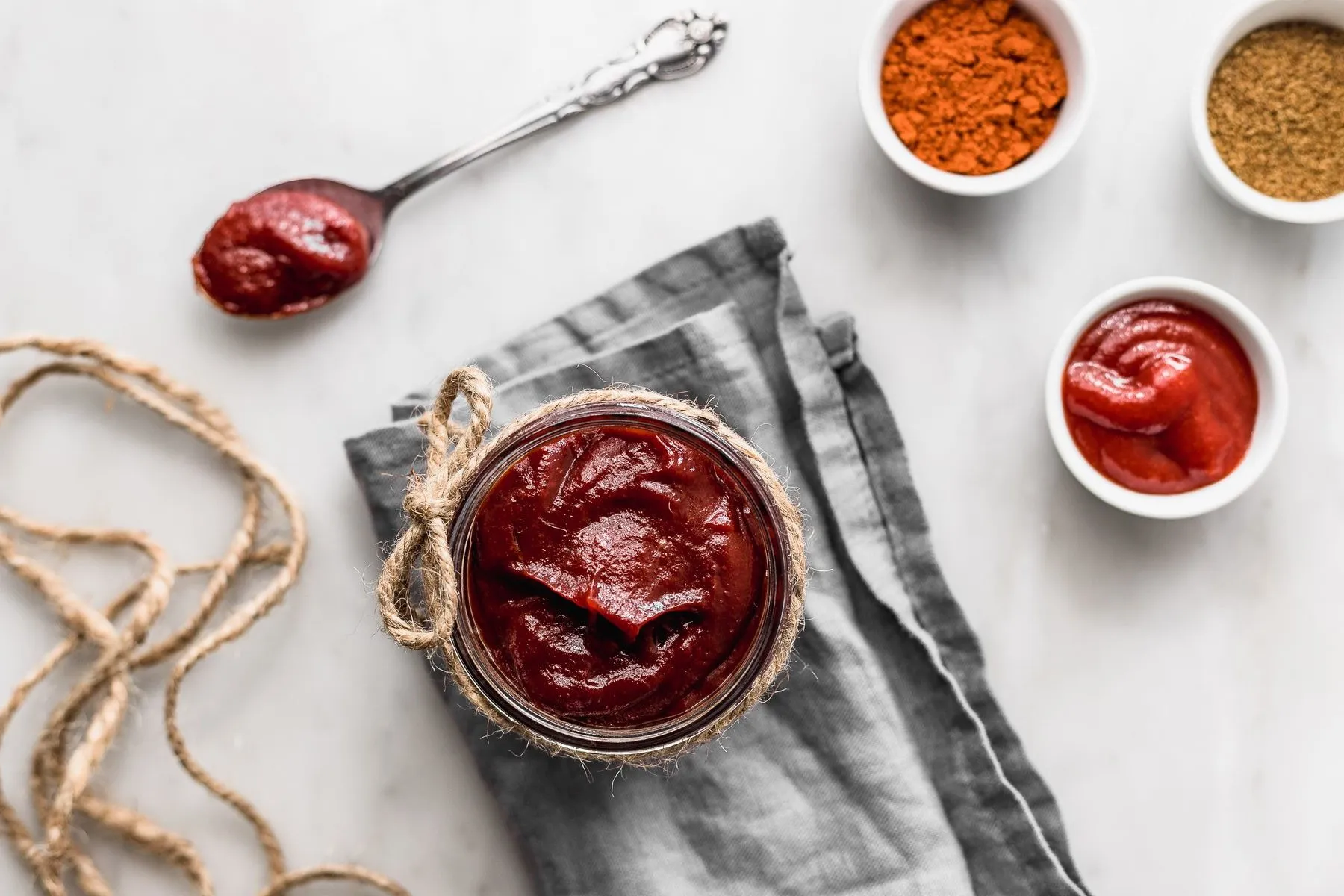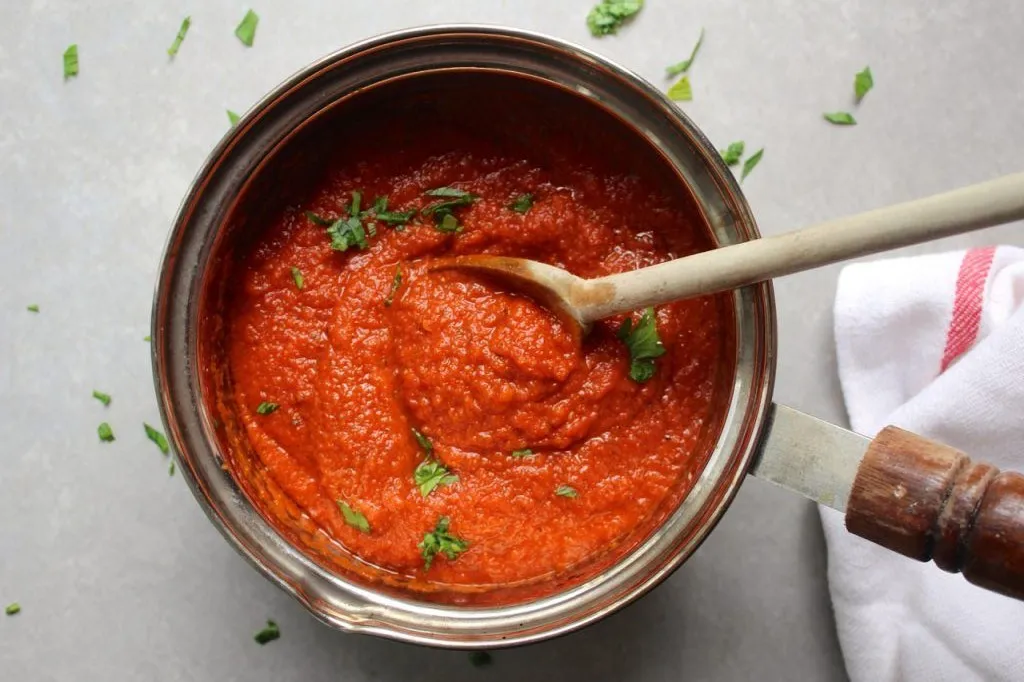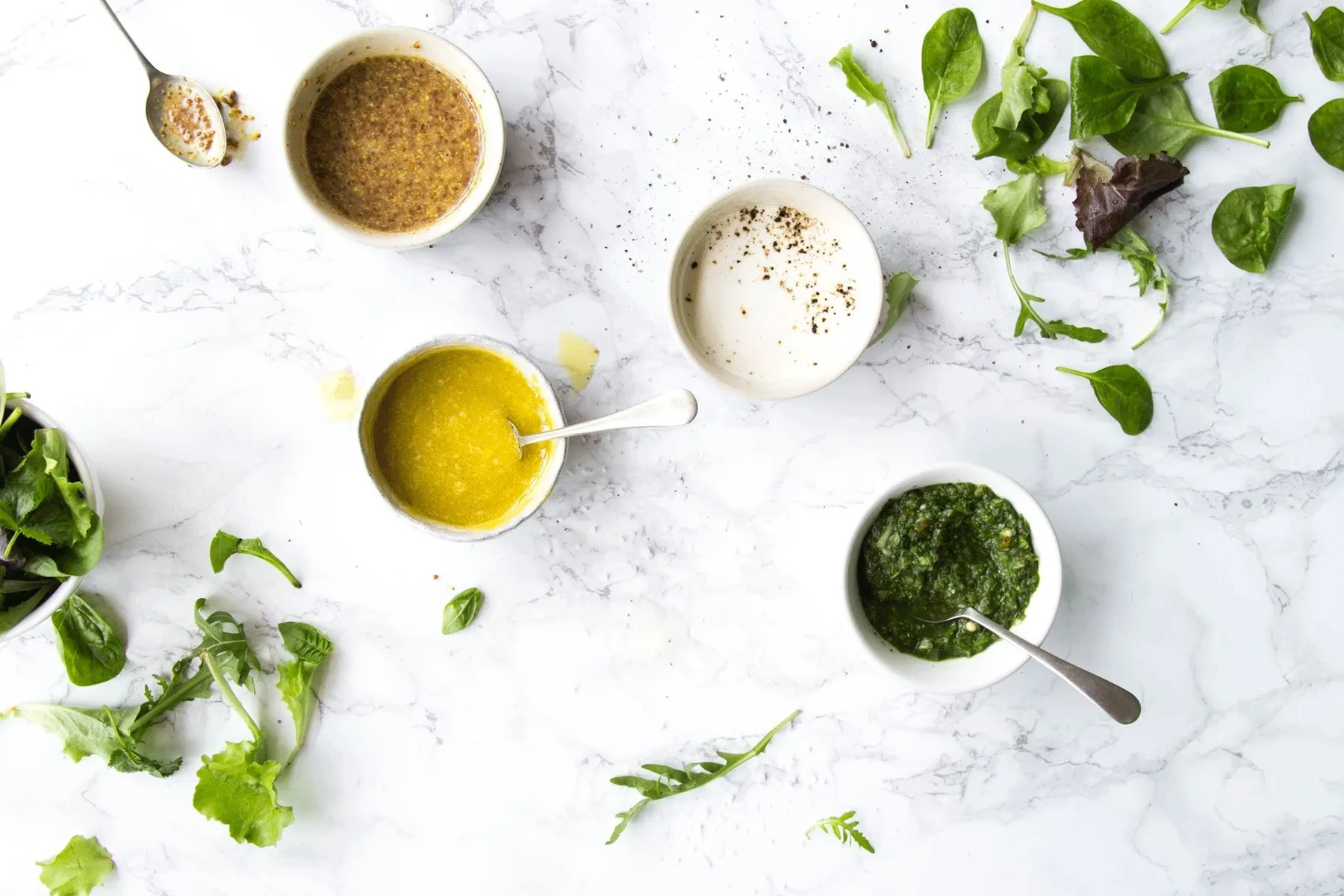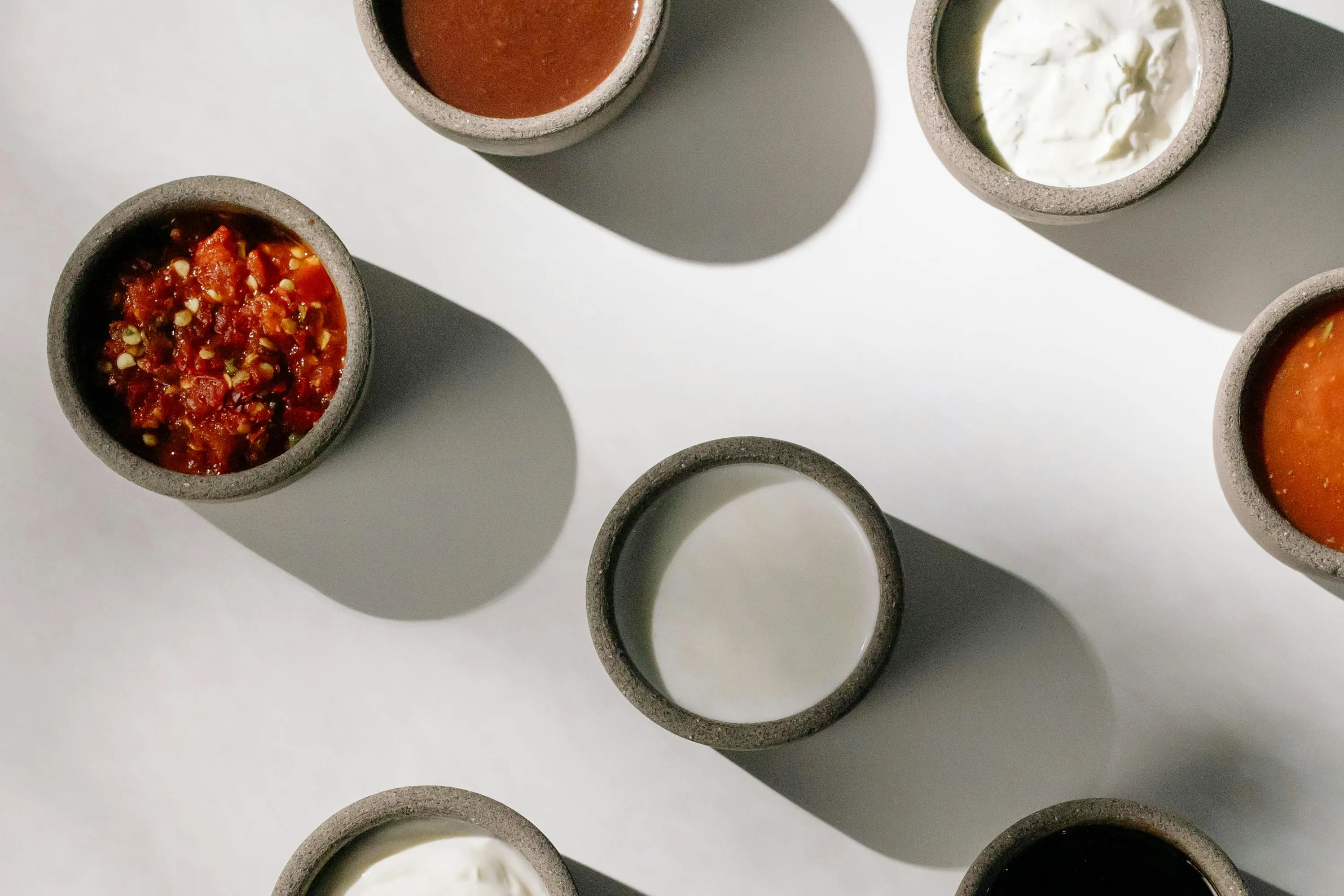
Here’s an incredible idea: to keep the sugar content low in a recipe, simply use less sugar. Fruits are naturally sweet, and cooking enhances this effect. Forget the 1 kg of sugar per 1.5 kg of apricots. Add sugar sparingly — not demonizing it but choosing the best type. I use coconut sugar, specifically the solid block of coconut flower sap. It’s soft and easy to chop with a knife. Less sugar means more preserved fruit flavor, which is fantastic.
Lime or lemon is essential to activate the pectin, which thickens, preserves the color, and balances the taste. To achieve a marmalade-like texture (and as an additional preservative), agar-agar is used. As a seaweed extract, it’s great for gut health and creates the perfect consistency without relying on sugar. It’s all very simple.
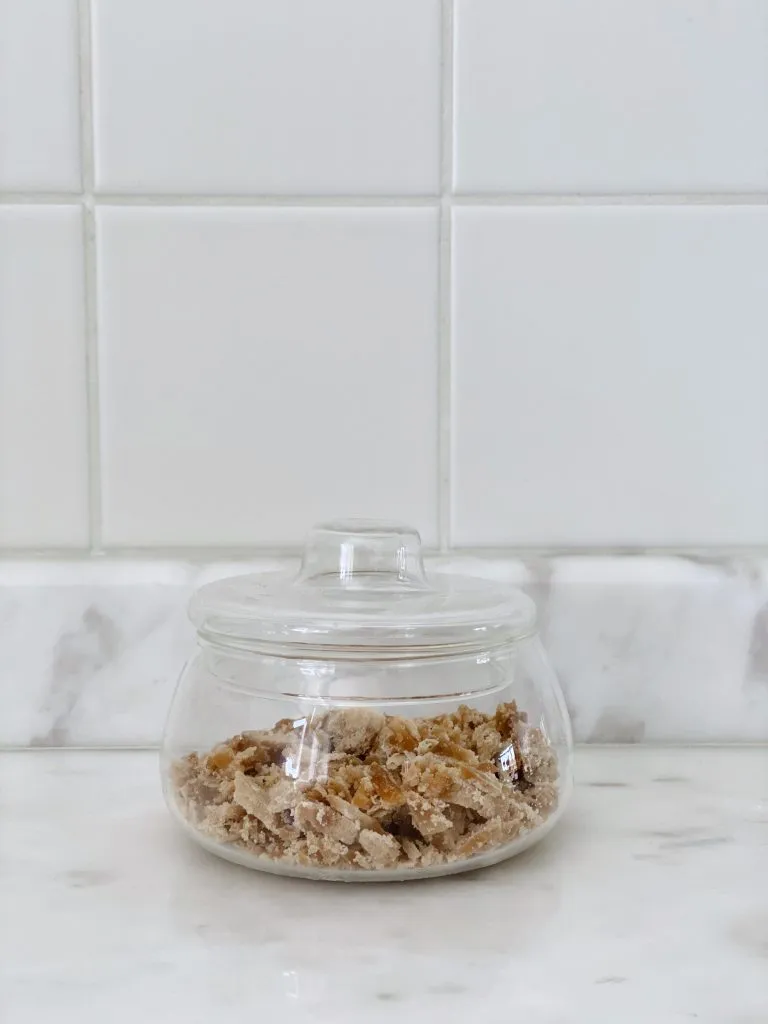
- 1 kg apricots
- 140-180 g coconut sugar
- 1-1.2 tbsp. agar-agar
- a small pinch of pink salt
- 1 large lime
- lemon thyme (or lemon verbena, lemon basil, regular thyme, or 3-4 sage leaves as substitutes)
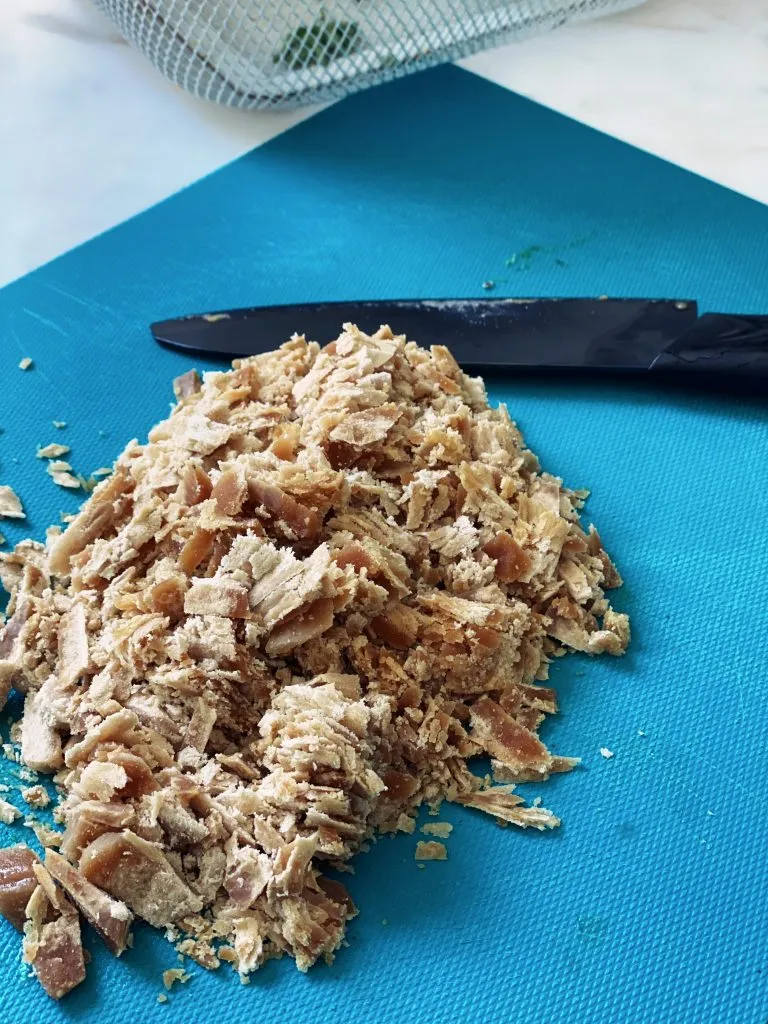
Break the apricots in half and remove the pits. Peel the lime zest and cut the flesh into small cubes. Prepare the coconut sugar by chopping it if using a soft block form.
Preheat the oven to 110°C and place clean, open jars and their screw-on lids inside. This is your sterilization process. Heat the jars and lids above 100°C for 10 minutes, then let them cool. It’s essential for the jam to be hot when placed into the jars — this helps create a vacuum seal and prevents air from entering.
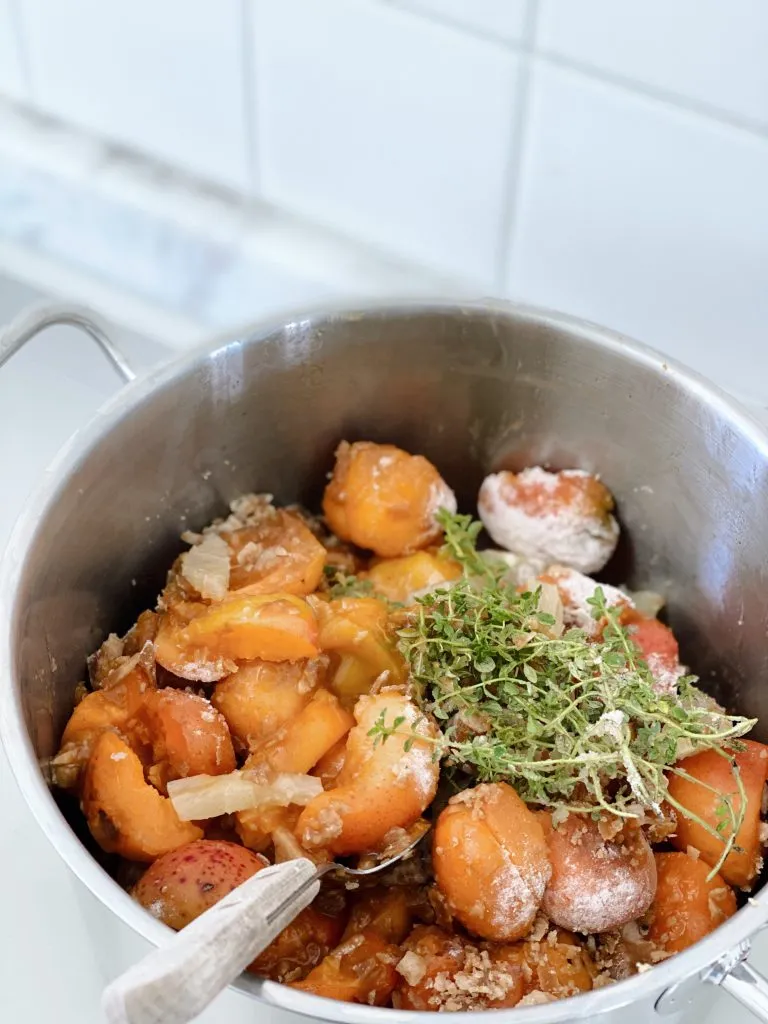
In a pot with a thick bottom, cook the apricots, salt, and sugar, continuously mashing with a fork. Stir and mash constantly for 3-5-7 minutes, bring to a boil, and immediately reduce the heat. Skim off the foam and continue cooking over medium-low heat for 30–40 minutes. Add the lime and lemon thyme (4–7 sprigs with leaves).
Five minutes before finishing, add 1 full tablespoon of agar-agar powder (avoid overdoing it to prevent a rubbery marmalade) and mix thoroughly. Remove the thyme sprigs. Spoon the hot jam into the jars, seal immediately, and let cool to room temperature.
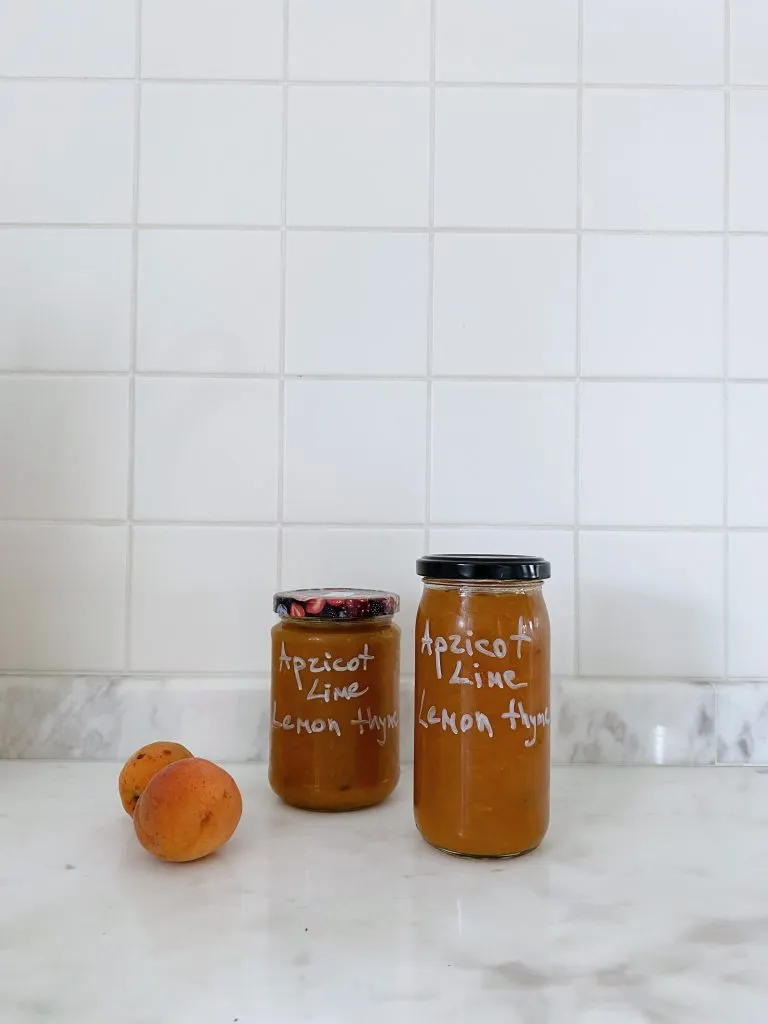

Break the apricots in half and remove the pits. Peel the lime zest and cut the flesh into small cubes. Prepare the coconut sugar by chopping it if using a soft block form.
Preheat the oven to 110°C and place clean, open jars and their screw-on lids inside. This is your sterilization process. Heat the jars and lids above 100°C for 10 minutes, then let them cool. It’s essential for the jam to be hot when placed into the jars — this helps create a vacuum seal and prevents air from entering.

In a pot with a thick bottom, cook the apricots, salt, and sugar, continuously mashing with a fork. Stir and mash constantly for 3-5-7 minutes, bring to a boil, and immediately reduce the heat. Skim off the foam and continue cooking over medium-low heat for 30–40 minutes. Add the lime and lemon thyme (4–7 sprigs with leaves).
Five minutes before finishing, add 1 full tablespoon of agar-agar powder (avoid overdoing it to prevent a rubbery marmalade) and mix thoroughly. Remove the thyme sprigs. Spoon the hot jam into the jars, seal immediately, and let cool to room temperature.


